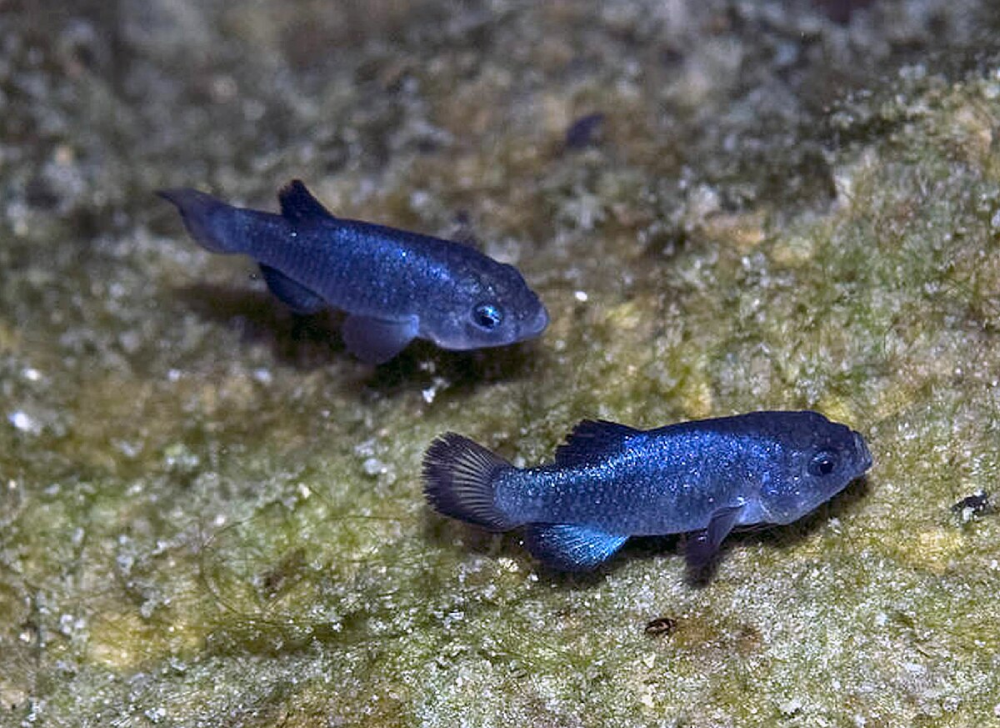In the harsh desert landscape of the southwestern United States, where temperatures soar and water is scarce, exists a remarkable survivor—the Devil’s Hole Pupfish. This tiny fish, no larger than a fingertip, inhabits one of the most extreme environments on Earth, a place so unique and isolated that it has captured the curiosity of scientists and conservationists alike. In this article, we delve into the fascinating world of the Devil’s Hole Pupfish, exploring its biology, habitat, conservation challenges, and the ongoing efforts to protect this critically endangered species.
Biology and Habitat of the Devil’s Hole Pupfish
The Devil’s Hole Pupfish (Cyprinodon diabolis) is a species of pupfish endemic to Devil’s Hole, a water-filled cavern located within the Ash Meadows National Wildlife Refuge in Nevada. Measuring only about an inch in length, with a striking blue-green coloration, this fish has adapted to survive in the highly specialized conditions of its unique habitat.
Devil’s Hole itself is a geothermal pool, part of an underground aquifer system connected to Death Valley’s aquifer. The water in Devil’s Hole is incredibly clear and mineral-rich, with a constant temperature of around 92°F (33°C). The pool extends down more than 500 feet (150 meters), but the pupfish primarily inhabit the top 80 feet (24 meters) of the water column, where light penetrates and algae thrive.
Despite its small size and isolated habitat, the Devil’s Hole Pupfish plays a crucial role in its ecosystem. It is an opportunistic feeder, consuming algae, small invertebrates, and detritus, thus contributing to nutrient cycling within Devil’s Hole.
Conservation Challenges
Despite its resilience and adaptability, these Pupfish faces numerous threats to its survival. Chief among these is habitat destruction and degradation. Human activities, including groundwater pumping, agricultural runoff, and urban development, have significantly altered the hydrology of the Ash Meadows region, impacting the flow of water into Devil’s Hole and altering water quality.
Additionally, the introduction of non-native species, such as crayfish and predatory fish, poses a significant threat to the pupfish. These invasive species compete with the Devil’s Hole Pupfish for resources and prey upon their eggs and young, further endangering an already vulnerable population.
Climate change presents another looming threat to the Devil’s Hole Pupfish and its habitat. Rising temperatures and alterations in precipitation patterns could disrupt the delicate balance of the aquifer system that sustains Devil’s Hole, potentially leading to changes in water temperature, chemistry, and availability.
Conservation Efforts for Devil’s Hole Pupfish
Recognizing the critical status of this fish breed, conservation efforts have been underway for decades to protect this species and its habitat. The establishment of the Ash Meadows National Wildlife Refuge in 1984 provided legal protection for Devil’s Hole and its surrounding ecosystem, safeguarding it from further development and exploitation.
In addition to habitat protection, conservationists have implemented various measures to mitigate threats to the pupfish population. These include the installation of fencing around Devil’s Hole to prevent human disturbance, the removal of non-native species, and efforts to restore natural water flow and quality to the aquifer system.
Research and monitoring play a vital role in conservation efforts for the Devil’s Hole Pupfish. Scientists closely study the fish’s behavior, population dynamics, and genetics to better understand its ecological requirements and inform management strategies. Advances in technology, such as underwater cameras and environmental sensors, have enabled researchers to observe and record pupfish behavior in their natural habitat with minimal disturbance.
Looking Ahead
Despite the challenges it faces, the Devil’s Hole Pupfish serves as a symbol of resilience and adaptation in the face of extreme conditions. Its survival is not only a testament to the ingenuity of evolution but also a reminder of the interconnectedness of all life on Earth.
As we continue to grapple with the profound environmental changes brought about by human activity, the story of the Devil’s Hole Pupfish serves as a poignant reminder of the importance of conservation and stewardship. By protecting this tiny fish and its fragile habitat, we not only preserve a unique and irreplaceable part of our natural heritage but also ensure the continued survival of countless other species that depend on healthy aquatic ecosystems for their existence.
In the end, the fate of this Pupfish is intertwined with our own. By working together to address the root causes of its decline and implementing effective conservation measures, we can ensure that this remarkable species continues to thrive for generations to come.










